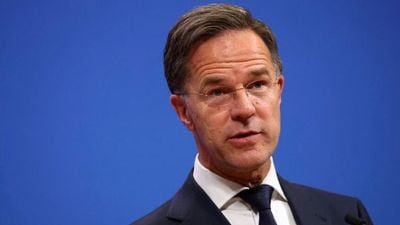The Chinab compromise for Kashmir
Compromise is the latest diplomatic buzzword on Kashmir. If Prime Minister Vajpayee talks of a “compromise” with Pakistan in Germa...

Compromise is the latest diplomatic buzzword on Kashmir. If Prime Minister Vajpayee talks of a “compromise” with Pakistan in Germany, Union Home Minister L.K. Advani puts forth the mantra of “give and take” in the US. General Musharraf, too, has tried to sound like a dove while compromise is the theme of his foreign minister Khursheed Ahmad Kasuri’s statements.
Although this approach is seen as a major departure from the official stance of both New Delhi and Islamabad, no leader from either side has ever spelled out their perception of “compromise”. The truth, however, is that compromise in the Kashmir context is as complex and controversial as the various perceptions and official stances of the two countries.
New Delhi’s “serious compromise” can stretch to accept the LoC as an international border. In fact, days before Prime Minister Vajpayee’s interview with German daily Der Spiegel, he had already set the tone for such a compromise when he extended a hand of friendship to Pakistan here on ground zero. “Compromise” on this side of the LoC begins and ends at the LoC. “Give and take” clearly means, at the most, accepting Pakistan’s sovereignty in the area it has controlled since 1947. In fact, the strongest proponent of this solution had been former chief minister, Farooq Abdullah, who had been advocating the legitimisation of the present division of Kashmir for a long time. But there is hardly anybody, from Musharraf to those within the Kashmiri separatist leadership, who can accept it as a bargain for peace.
Pakistan, however, is toying with an altogether different definition of “compromise” on Kashmir. It seems it has reconciled itself to a formula of exchanging land for peace. In a major departure from the official stance, the POK prime minister, Sardar Sikandar Hayat Khan, came up last month with the Chinab formula. His contention is that Kashmiris on both sides of the LoC would not accept the status quo and called upon New Delhi and Islamabad to seriously consider the division of the J&K state with River Chenab marking the boundary. In fact, in 1950, when Australian diplomat Sir Owen Dixon put forward a plan to redraw the boundaries of Kashmir along religious lines, he saw the Chenab as a natural border.
According to British Foreign Office files declassified recently, the US and Britain were urging India and Pakistan to search for a partition solution in the mid-sixties. Hayat put forth this proposal on the pretext that the partition of India was also done on the same principle. Although Hayat’s proposal did attract a lot of criticism, its nature and timing clearly indicates that he has the tacit blessing of the Pakistani establishment. There is, in fact, a lot of support to Hayat’s Chinab formula in the Pakistani media. In fact, Pakistan’s former foreign secretary Niaz A. Naik claimed that this proposal was actually being discussed during the Track II efforts before Agra and that Vajpayee had shown an interest in it.
The Chinab formula has supporters among the Kashmiri separatist leadership as well. The Hurriyat chairman, Abdul Gani Bhat, is a strong proponent of such a partition, while Jamat-e-Islami leader Syed Ali Shah Geelani, too, had supported division of the state on religious lines to resolve the issue. This might be a compromise for Pakistan—a major shift in their Kashmir policy—but it is hardly practical. Such a partition would lead to another spell of ethnic cleansing as around eight lakh people from both the faiths live on the wrong side of Chinab. If the entire Indo-Pak hostility and the politics of hatred in both the countries have their roots in the partition of India, how can another partition get the people of the two countries any closer? It would simply be the beginning of yet another tragedy.
Thus the talk of a “compromise” on Kashmir from either side of the LoC is all set to act as yet another addition to the complexity of Indo-Pak problems rather than be a sign of flexibility. Kashmir does not deserve a division. There is a need to begin a dialogue without a premeditated solution to this issue. Let there be a ceasefire from both sides. Let Kashmiris get a feel of peace and let talks begin. And let both the parties try to address it as a problem involving the fate of people rather than a dispute on land. If people living on either side of the LoC are allowed to travel and meet each other as a step towards reconciliation, lots of myths will disappear instantaneously. Once the channels of communication are opened it will lead to flexibility among the people thus creating space for the political leadership of the two nations to move ahead on the peace track.





- 01
- 02
- 03
- 04
- 05


























